An Introduction to Types of Paving
There are so many different types of paving out there, but which ones are right for your project? Whether it’s garden paving, patio paving or driveway block paving, Indian stone paving, porcelain paving slabs or block paving bricks, you’ll no doubt have several questions – all of which we’ll attempt to answer right here in this handy “Introduction to Paving Types” guide. We’ll even give you tips on how to clean block paving, how to lay paving slabs and apply block paving sealer.
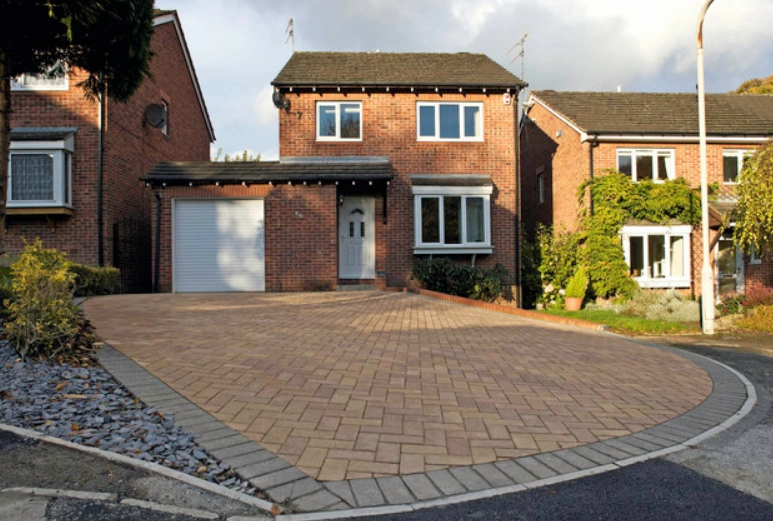
Howarth Timber
The 4 main types of paving
Howarth Timber & Building Supplies stocks four key types of paving for the building trade – block paving, concrete paving slabs, porcelain paving and natural stone paving. These are available in different colours and sizes ranging from smaller brick paving to medium sized 600 x 600 paving slabs and larger 900 x 600 paving slabs – a size to bring all your garden paving ideas to life. Here is a breakdown of the four main types of paving.
Block Paving
Also known as brick paving, block paving is an extremely popular choice of paving for outdoor areas, not only because of its durability, but also its versability and ease of maintenance. Perfect for patios, pathways, driveways, block paving bricks are available in concrete or clay bricks and enable you to create unique designs that look beautiful and stand the test of time, even under heavy foot traffic. The most popular type is Tegula block paving plus we also stock Marshalls block paving bricks which are the ideal choice for landscaping renovation. Block paving is available in a wide choice of types including concrete block paving, granite block paving, limestone block paving sandstone block paving and other natural stone block paving.

Howarth Timber
Concrete Paving Slabs
Want to create a create a stylish and highly practical patio, walkway, or seating area? Concrete paving slabs are a great option which are capable of quickly and easily covering large areas. Durable and highly versatile, concrete paving slabs are available in a range of natural colours including everything from a dark charcoal or grey to gold and natural autumnal brown. We offer a choice of 600x600 paving slabs and 900 x 600 paving slabs and a wide range spanning affordable concrete paving slabs to premium brands like Marshalls paving slabs.
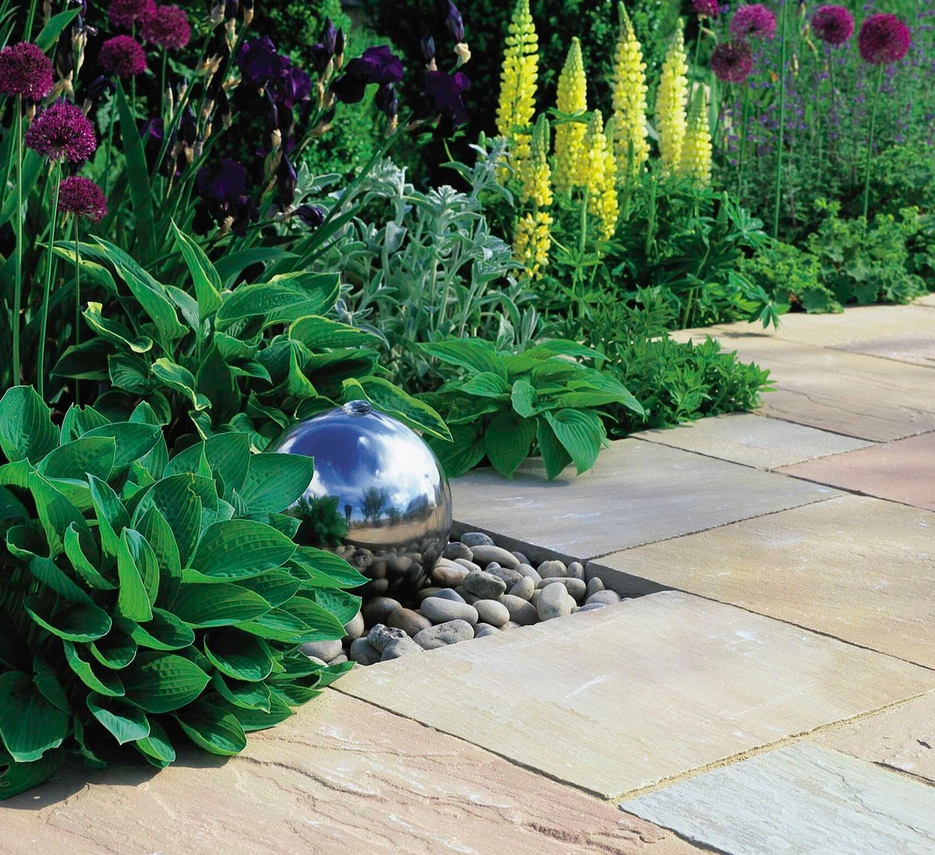
Howarth Timber
Porcelain Paving
Porcelain has to be one of the most hard-wearing and practical types of paving as it doesn’t scratch fade or wear. The low-maintenance choice, porcelain paving needs no sealing and is resistant to moss, algae and staining. As they are non-porous and often have a non-slip surface, they are ideal for use in wet climates like ours and also poolside. Being frost-proof also makes them suited for use in the UK. Aesthetically, porcelain paving is perfect for contemporary homes and their consistency of colour means they are easy to match when installing.
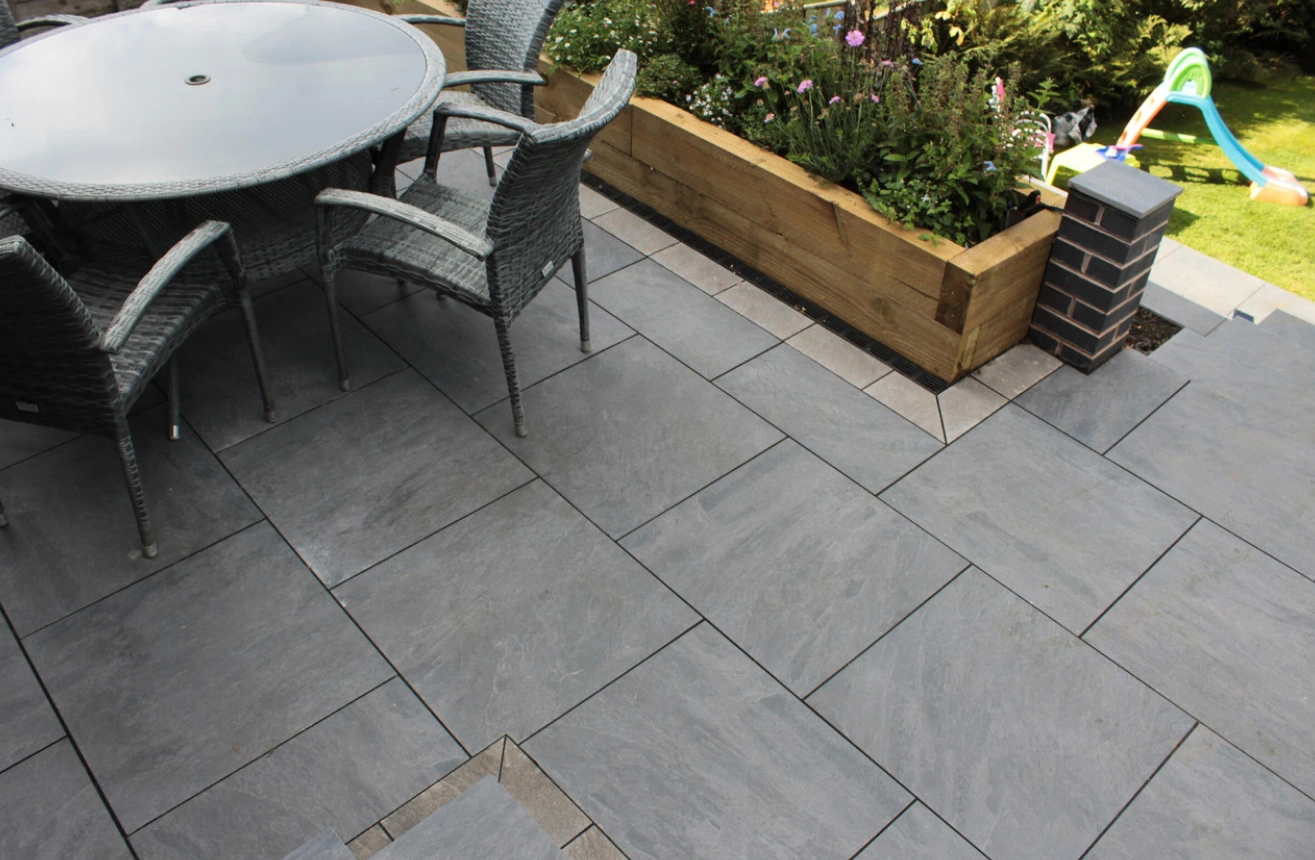
Howarth Timber
Natural Stone Paving
If you have a traditional style of home and desire a totally natural look, then natural stone paving is the obvious choice. These are available in a vast array of stone types, colours, shapes and sizes and can be set in a variety of different patterns from regimented brick to opus for a more random look. Indian sandstone paving slabs and limestone are the most popular choices of natural stone paving. Our sandstone paving slabs are calibrated to ensure they are the same shape and size for ease of installation – tough and durable, they require just a brush and occasional clean. Our limestone paving range is also highly durable, has wonderful natural veining, is available in on-trend colours and includes high quality Marshalls paving. As natural products, no two natural stone paving slabs look the same which adds beauty and character to your outdoor spaces.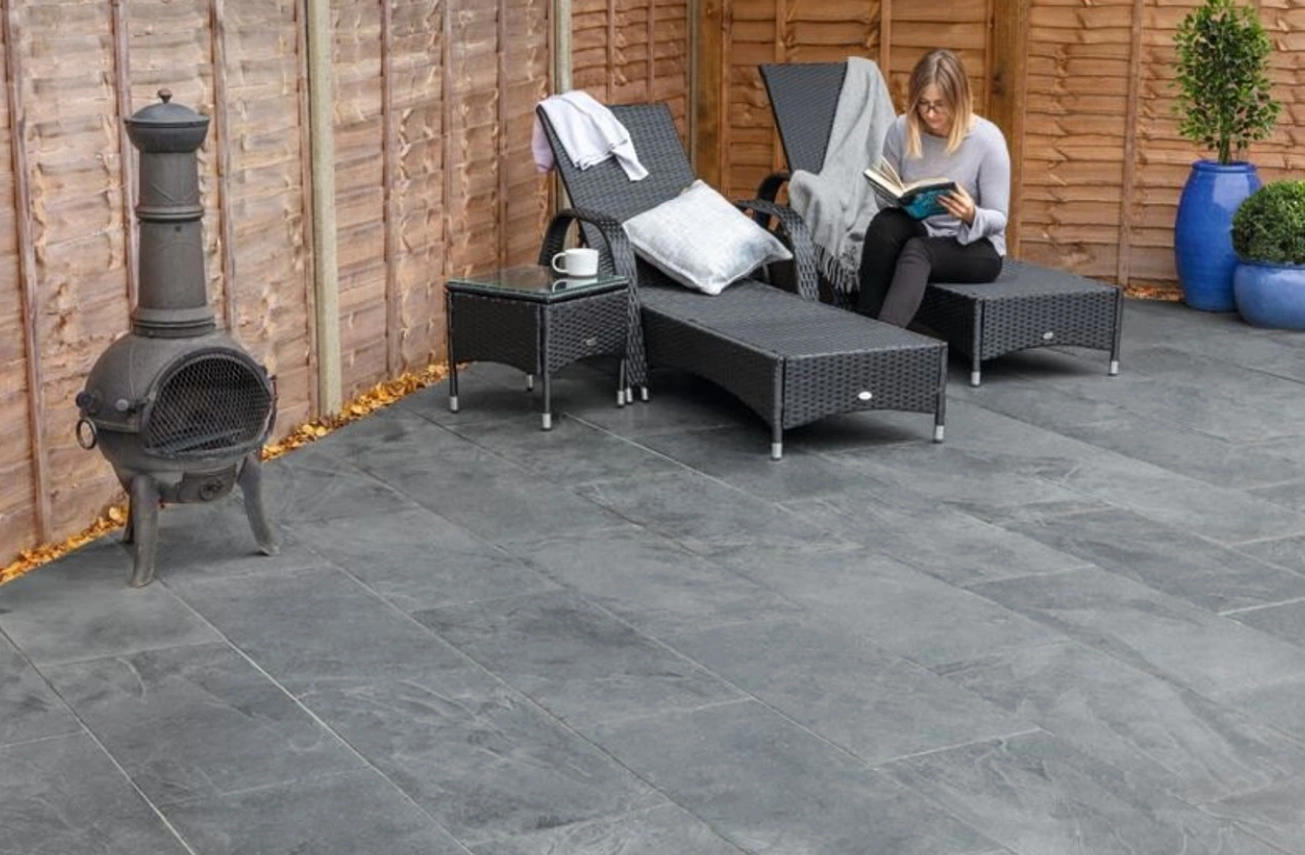
Howarth Timber
How to lay paving slabs
Tools and materials required:
- Concrete, porcelain or natural stone paving slabs
- Sub-base material MOT type 1
- Sharp sand and cement or adhesive for porcelain tiles
- Angle grinder
- Spirit level, trowel, pointing trowel, shovel and rubber mallet
- Tape measure and string line
- Plate compactor
Here’s how to lay paving slabs:
- Start by planning and measuring out the area using strings and pegs. You need to also check you levels for drainage. A 1:60 fall away from buildings is recommended.
- Excavate to a depth of 15-20cm which is ideal for a patio.
- Lay a sub-base of MOT Type 1 hardcore and compact it well in layers with a plate compactor ensuring it is level.
- Mix a damp bedding layer of 4 parts sharp sand to 1 part cement and spread it in small sections to 3-5 cm thick. Alternatively, use a tile adhesive if laying porcelain slabs.
- Lay the slabs onto the mortar and tap with a rubber mallet to bed them in, checking level and gradient with a spirit level as you go. Use an angle grinder to cut slabs. Make the joints between slabs consistent at around 10-15mm for stone – closer if you are laying porcelain.
- Leave the slabs to set for between 24 and 48 hours before filling the joints with a mortar mix and use a pointing trowel to smooth joints. Alternatively, brush in and compact a jointing compound.
- Finally, wipe away any excess mortar and leave for several days before any heavy use – especially when laying driveways.
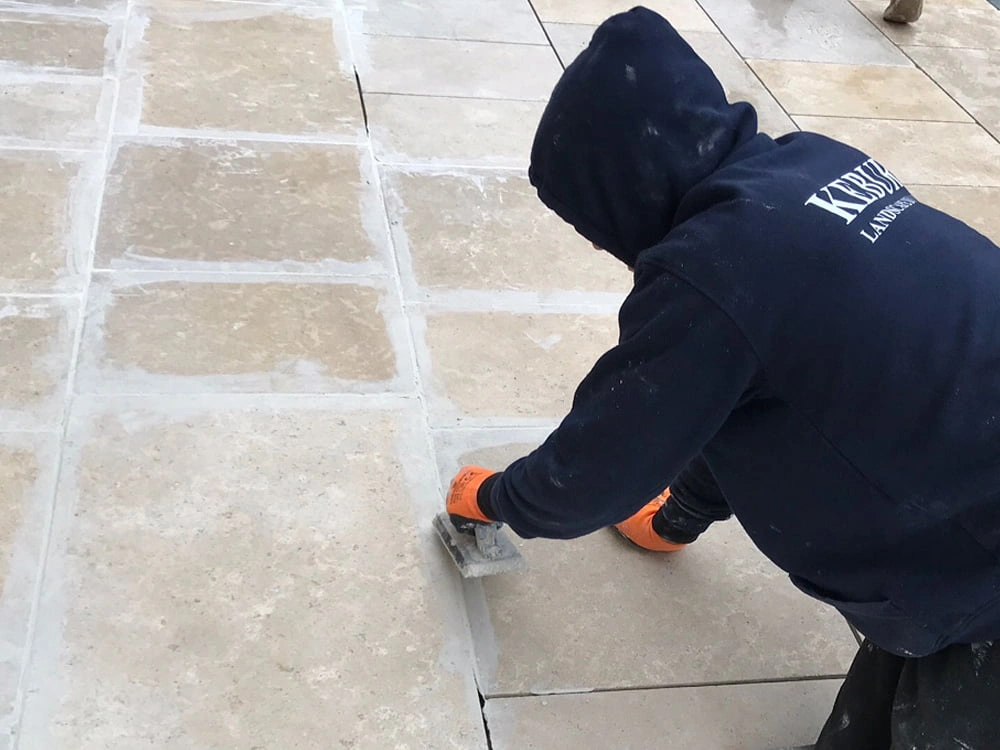
How to apply block paving sealer
Tools and materials required:
- Pressure washer
- Paving sealant (solvent or water-based)
- Sprayer, roller or brush to apply sealer
- Masking tape, bucket, gloves and eye protection
Here’s how to apply block paving sealer:
- Look ahead and find a stretch of 3 days where no rain is forecast and the temperature is between 10 and 20°C
- First, remove weeds, moss, algae and white slats by clean the paving with a pressure washer or scrubbing it with a brush. Leave to dry for at least 24 hours.
- Mask walls and lawns with sheeting and masking tape to protect them.
- Section at a time, apply the paving sealer evenly with a low-pressure sprayer or roller using a brush for the more detailed areas. Do not apply too much to avoid the sealer puddling.
- Allow 8+ hours for the sealer to dry then apply a second coat of sealer if required.
- The sealer will be fully cured in 1-2 days.
![]()
How to clean block paving
Tools and materials:
- Stiff brush
- Pressure washer
- Bucket and paving cleaner
- Kiln-dried sand
Here’s how to clean block paving:
- Begin by clearing moss, dirt and leaves away with a brush.
- Mix an acid-free block paving cleaner with water according to the manufacturer instructions, apply with a stiff brush, leave for 20 minutes and then rinse off.
- Pressure wash diagonally at a distance using a fan setting or patio attachment to avoid removing the joint sand.
- Leave to dry for several hours then brush kiln-dried sand into the joints between blocks.
- To reduce weed growth, algae and stains, apply a paving sealer.
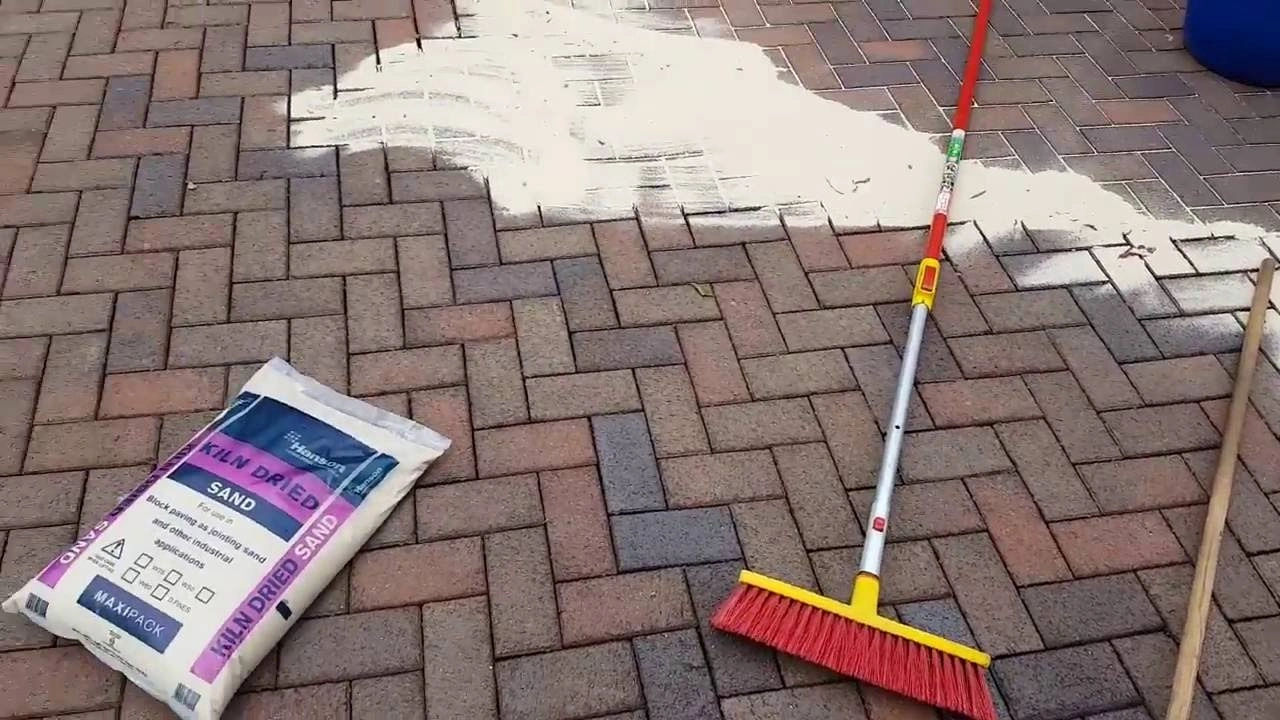 Youtube
Youtube
We’re here to help
If you have any more questions regarding any aspect of these different types of paving, or need any additional information about the paving we sell at Howarth, please visit your local Howarth branch, or contact our customer services on 01472 907051.
You can also explore our range of paving products here, or you can even visit us in branch for more information.
Recent Posts
-
An Introduction to Types of Paving
There are so many different types of paving out there, but which ones are right for your project? Wh
-
10 small outdoor kitchen ideas just in time for summer
As summer approaches, many homeowners are looking for ways to enhance their outdoor living spaces&md
